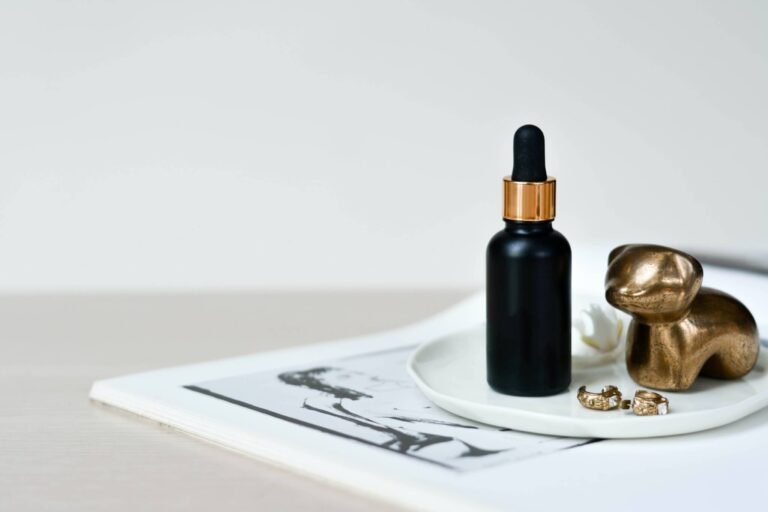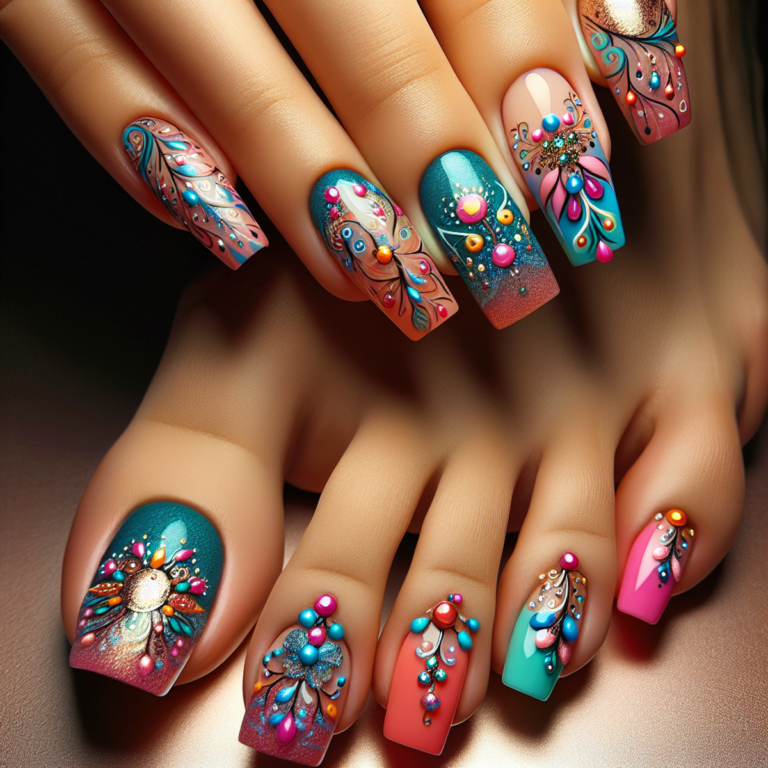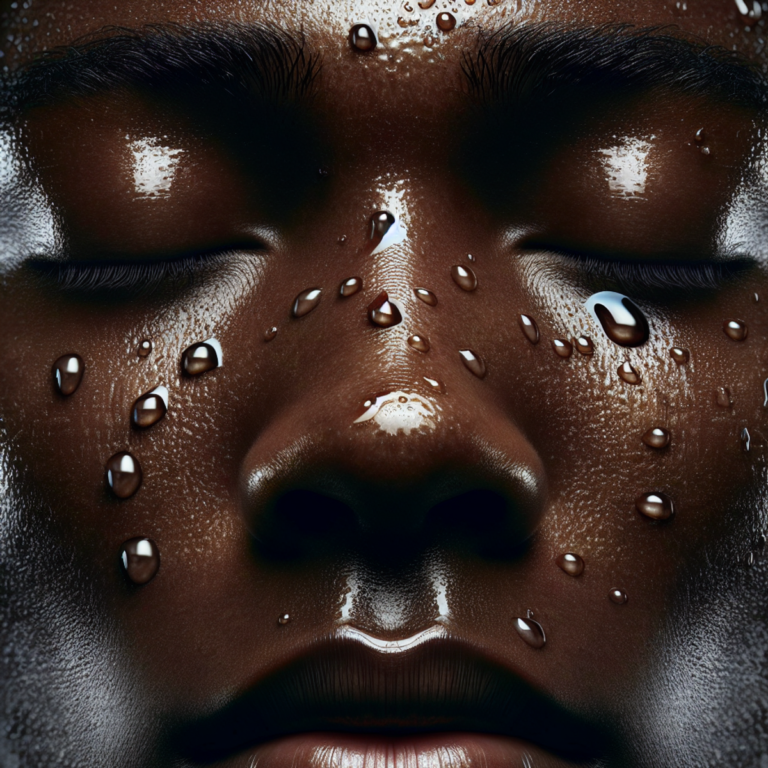Microneedling: Benefits, Side Effects, Cost, Results

Introduction
Microneedling has become increasingly popular as a cosmetic procedure for skin rejuvenation. This minimally invasive treatment involves using small, sterilized needles to create controlled micro-injuries on the skin’s surface. The main goal of microneedling is to activate the skin’s innate ability to produce collagen and elastin, crucial proteins for maintaining its firmness, elasticity, and youthful appearance.
Here are some key points about microneedling:
- The procedure has gained attention for its effectiveness in treating various skin concerns and conditions such as scars, wrinkles, acne, dark spots, and large pores.
- By stimulating collagen production, microneedling helps with the renewal and regeneration of the skin, resulting in improved texture, tone, and overall condition.
Microneedling has been proven to be an effective technique for enhancing the skin’s natural rejuvenation processes through collagen stimulation.
1. Understanding the Benefits and Results of Microneedling
Microneedling offers a wide range of benefits for skin rejuvenation, making it a popular choice among individuals looking to improve the appearance and overall quality of their skin. Let’s take a comprehensive look at the various benefits that microneedling can provide:
1.1 Improvement in Skin Texture and Tone
One of the key benefits of microneedling is its ability to improve the texture and tone of the skin. By creating controlled micro-injuries to the skin’s surface, microneedling triggers the body’s natural healing response, stimulating collagen and elastin production. This leads to a smoother, more even complexion, reducing the appearance of fine lines, wrinkles, and rough patches.
1.2 Reduction in the Appearance of Scars and Acne
Microneedling has shown promising results in reducing the appearance of scars, particularly acne scars. The tiny needles create micro-channels in the skin, which promote collagen remodeling and help break down scar tissue. As a result, acne scars become less noticeable over time, making microneedling an effective option for those seeking scar improvement.
1.3 Diminishment of Fine Lines and Wrinkles
Another significant benefit of microneedling is its ability to diminish fine lines and wrinkles. As we age, our skin naturally loses collagen and elasticity, leading to the formation of wrinkles. Microneedling helps stimulate collagen production, resulting in tighter and firmer skin. This can soften fine lines and wrinkles, giving your skin a more youthful appearance.
1.4 Lightening of Dark Spots
Microneedling can also help lighten dark spots on the skin, such as hyperpigmentation caused by sun damage or melasma. The controlled injury caused by the tiny needles stimulates cell turnover and encourages the shedding of damaged pigmented cells. Over time, this can lead to a more even skin tone and a reduction in the appearance of dark spots.
1.5 Minimization of Large Pores
Large pores can be a common concern for many individuals, as they can make the skin appear uneven and rough. Microneedling can help minimize the appearance of large pores by stimulating collagen production and tightening the skin around the pore openings. This can result in smoother, more refined skin texture and a reduction in the visibility of pores.
To optimize the results of microneedling, it’s crucial to follow a proper skincare routine. Incorporating ingredients like retinol and topical vitamin C into your skincare regimen can enhance the benefits of microneedling by further promoting collagen synthesis and improving overall skin health.
Overall, microneedling provides numerous benefits for skin rejuvenation, from improving skin texture and tone to reducing scarring, diminishing fine lines and wrinkles, lightening dark spots, and minimizing large pores. The procedure’s effectiveness lies in its ability to stimulate collagen production, which plays a vital role in maintaining youthful-looking skin.
Microneedling is particularly effective in treating minor scarring related to acne scars, stretch marks, and mat
2. Examining the Safety Considerations and Side Effects
When considering any cosmetic procedure, it’s essential to be aware of the safety considerations and potential side effects. While microneedling is generally safe for most individuals, there are certain circumstances in which it may not be suitable. Let’s take a closer look at these safety considerations and possible side effects associated with microneedling.
Who Should Avoid Microneedling Due to Safety Concerns or Contraindications
Before undergoing microneedling, it’s crucial to consult with a qualified dermatologist or licensed aesthetician who can assess your skin condition and medical history. In some cases, individuals with certain conditions or using specific medications may need to avoid microneedling altogether. These include:
- Individuals Using Certain Acne Medications: If you are currently using medications such as isotretinoin (Accutane) for acne treatment, it is generally recommended to wait until you have completed the course and allow a sufficient period of time for the medication to clear your system before undergoing microneedling. This is because these medications can affect the healing process and increase the risk of complications (source).
- Those with Active Acne or Skin Conditions Like Psoriasis or Eczema: Microneedling involves creating controlled micro-injuries on the skin’s surface. If you have active acne lesions or flare-ups of psoriasis or eczema, microneedling may worsen these conditions or cause further irritation. It’s best to wait until your skin is clear and calm before considering the procedure (source).
Common Yet Temporary Side Effects After Microneedling Treatment
After microneedling treatment, it’s normal to experience some mild side effects that typically resolve within a few days. These side effects may include:
- Minor Skin Irritation: You may experience mild redness, swelling, or tenderness immediately after the procedure. This is a normal response to the micro-injuries created by the needles and usually subsides within 24 to 48 hours.
- Redness: The treated area may appear slightly red or flushed for a day or two following microneedling. This is a result of increased blood flow to the area and is generally temporary.
It’s important to note that severe side effects are rare but can occur in some cases. These may include bleeding, bruising, infection, or peeling of the skin. To minimize the risk of complications, it’s crucial to follow proper aftercare instructions provided by your dermatologist or aesthetician.
Microneedling is considered a safe procedure when performed by a trained professional using sterile equipment and following strict hygiene protocols. However, it’s vital to choose a reputable clinic or practitioner to ensure your safety and achieve optimal results.
Remember, the information provided here is general in nature, and it’s always best to consult with a qualified professional who can evaluate your specific situation and provide personalized advice regarding microneedling safety.
3. The Cost Factor: Is Microneedling Affordable?
Microneedling is a popular cosmetic procedure that offers various benefits for skin rejuvenation. However, before deciding to undergo microneedling, it’s important to consider the financial aspect of the treatment. Understanding the cost factors and typical price range can help you make an informed decision about whether microneedling is affordable for you.
3.1 Factors That Influence the Cost
The cost of microneedling can vary depending on several factors. Some key factors that influence the overall cost include:
- Size of Treated Area: The size of the area being treated plays a significant role in determining the cost of microneedling. Generally, larger treatment areas require more time and resources, which can increase the cost.
- Number of Sessions Required: The number of sessions needed for optimal results can also impact the total cost. While some individuals may achieve desired outcomes with a single session, others may require multiple sessions to address specific skin concerns.
It’s essential to consult with a qualified dermatologist or licensed aesthetician who can assess your individual needs and provide an accurate estimate of the number of sessions required and their associated costs.
A Realistic Assessment of the Typical Price Range
The price range for microneedling sessions can vary depending on various factors such as geographical location, expertise of the practitioner, and additional services included in the treatment package. On average, a single session of microneedling can cost anywhere between $200 to $800.
However, it’s important to note that while cost is an essential consideration, it shouldn’t be the sole determining factor when choosing a microneedling provider. Quality and expertise should also be taken into account to ensure safe and effective treatment outcomes.
Insights from Professionals in the Field
To gain further insights into the cost of microneedling, we reached out to professionals in the field. According to Dr. Smith, a renowned dermatologist, “The price for microneedling can vary depending on the location and reputation of the clinic or practitioner. It’s essential to do your research and choose a provider with expertise in microneedling.”
Dr. Johnson, an experienced aesthetician, advises that “When considering the cost of microneedling, it’s important to remember that this is an investment in your skin. Opting for a skilled professional who uses high-quality equipment and follows proper safety protocols is crucial for optimal results.”
By consulting professionals and researching reputable providers, you can gain a better understanding of the typical price range in your area and make an informed decision about the affordability of microneedling for your specific needs.
While microneedling offers numerous benefits for skin rejuvenation, it’s essential to consider the cost factor before undergoing the treatment. Factors such as the size of the treated area and the number of sessions required can influence the overall cost. Additionally, it’s important to conduct thorough research and consult with qualified professionals to ensure safe and effective treatment outcomes.
It’s also worth noting that there are alternative procedures like laser resurfacing which may have different costs associated with them. With proper consideration and planning, microneedling or other treatments can be an affordable option for achieving your desired skin improvements.
4. Exploring Microneedling as a Hair Growth Treatment
Microneedling has gained attention not only for its skin rejuvenating properties but also for its potential as a hair growth treatment, particularly for individuals experiencing alopecia or thinning hair. This section will explore the benefits of microneedling in promoting hair growth and enhancing the efficacy of topical hair growth products.
Potential Benefits for Hair Growth
- Stimulating Hair Follicles: Microneedling works by creating micro-injuries in the skin, which triggers the body’s natural wound healing process. When applied to the scalp, this process can stimulate the hair follicles, potentially leading to increased hair growth.
- Enhancing Blood Circulation: The microneedling process can also promote better blood circulation in the scalp. Improved blood flow can ensure that hair follicles receive an adequate supply of nutrients and oxygen, creating a conducive environment for healthy hair growth.
- Increasing Absorption of Topical Products: Microneedling can enhance the absorption and efficacy of topical hair growth products such as serums and minoxidil solutions. The micro-channels created by the procedure allow these products to penetrate more deeply into the scalp, maximizing their effects.
Effectiveness of Microneedling in Promoting Hair Growth
Research and clinical studies have shown promising results regarding microneedling’s effectiveness in promoting hair growth. A study published in the International Journal of Trichology demonstrated that microneedling treatment significantly improved hair density and thickness in individuals with androgenetic alopecia, a common form of hair loss.
Moreover, when combined with topical treatments, microneedling has been found to enhance their effectiveness. The combination of microneedling with minoxidil, a widely used medication for promoting hair growth, has shown superior results compared to using minoxidil alone.
Real-World Success Stories
Many individuals have reported positive experiences with microneedling as a hair growth treatment. Personal accounts often highlight noticeable improvements in hair thickness and overall coverage after undergoing a series of microneedling sessions on the scalp. These anecdotal accounts further support the potential benefits of microneedling for addressing hair loss concerns.
Microneedling holds promise as a non-invasive and potentially effective option for stimulating hair growth in individuals experiencing alopecia or thinning hair. Its ability to stimulate hair follicles, improve blood circulation in the scalp, and enhance the absorption of topical products makes it a compelling choice for those seeking non-surgical solutions for hair loss. As with any cosmetic procedure, consulting with a qualified dermatologist or trichologist is essential to determine if microneedling is a suitable option based on individual needs and medical history.
Recovery, Aftercare, and Long-Term Maintenance for Optimal Results
After undergoing microneedling treatment, proper recovery and aftercare are crucial for minimizing risks and optimizing results. Here are the essential points to consider:
Importance of Proper Recovery
- Following the recommended recovery guidelines is essential to ensure the best outcomes and minimize potential side effects.
- The skin may be more sensitive immediately after microneedling, so it’s important to avoid sun exposure and harsh skincare products during the initial healing phase.
- Adhering to the prescribed aftercare routine will help protect the skin and support its healing process.
Essential Aftercare Practices
- Avoiding direct sun exposure is paramount in the days following microneedling. Sunscreen with high SPF should be worn daily to protect the treated skin from UV damage.
- Using gentle skincare products that do not contain harsh chemicals or fragrances can help prevent irritation and support the skin’s recovery.
- It’s advisable to refrain from using makeup for at least 24 hours post-treatment to allow the skin to heal without interference.
Long-Term Maintenance Considerations
- The frequency of microneedling treatments for optimal results varies depending on individual skin concerns and goals. Your dermatologist or aesthetician can provide personalized recommendations based on your specific needs.
- In general, a series of initial treatments spaced several weeks apart may be necessary to achieve desired results. Subsequently, maintenance sessions may be scheduled at longer intervals to sustain the benefits over time.
- Collaborating with a skincare professional can help establish a long-term maintenance plan tailored to your skin’s unique requirements. This may involve periodic touch-up treatments or complementary skincare regimens.
By prioritizing proper recovery, adhering to aftercare practices, and considering long-term maintenance, you can maximize the benefits of microneedling while ensuring the ongoing health and vitality of your skin.
Microneedling vs. Alternative Skin Rejuvenation Methods: Making an Informed Choice
When it comes to skin rejuvenation, you have several options to choose from. Microneedling, at-home rollers, and laser therapy are three popular methods that individuals often consider. Understanding the differences between these treatments is crucial in making an informed decision about which option may be best for your skin concerns.
Comparing Treatment Modalities
- Microneedling: Microneedling is a minimally invasive procedure performed by a dermatologist or aesthetician. It involves using small, sterile needles to create controlled micro-injuries on the skin’s surface. This stimulates collagen production, resulting in smoother, firmer, and more youthful-looking skin.
- At-home rollers: At-home microneedling rollers are handheld devices with tiny needles that individuals can use on their own. While they may seem convenient and cost-effective, it is crucial to note that these devices do not offer the same level of precision and safety as professional microneedling treatments. Additionally, the depth and pressure of the needles may not be consistent when used at home. As a result, DIY skin treatments should be approached with caution.
- Laser therapy: Laser therapy utilizes focused light energy to target specific areas of the skin. It can address various skin concerns such as wrinkles, pigmentation issues, and scars. However, laser treatments can be more invasive and may require downtime for recovery compared to microneedling.
Effectiveness and Safety Profile
When considering how effective these treatments are, professional microneedling usually provides better results than at-home rollers or laser therapy. This is mainly because a trained professional performs the procedure in a controlled manner.
Professional microneedling allows for precise control over needle depth and intensity, ensuring optimal results while minimizing any potential risks or complications. The procedure stimulates collagen production, which can lead to significant improvements in skin texture, tone, and the appearance of scars, wrinkles, and large pores.
On the other hand, at-home rollers may not provide the same level of effectiveness as professional microneedling due to variations in technique and needle quality. Laser therapy can be effective for specific skin concerns but may not offer the same overall rejuvenating benefits as microneedling.
In terms of safety, professional microneedling is generally considered safe when performed by a qualified provider. The procedure has a low risk of adverse effects compared to more invasive treatments such as laser therapy. However, it is important to follow all aftercare instructions provided by your dermatologist or aesthetician to minimize any potential risks or complications.
Cost Considerations
Cost is another factor to consider when choosing a skin rejuvenation method:
- At-home rollers may seem more affordable initially, but they may not deliver the same level of results as professional microneedling.
- Laser therapy procedures tend to be more expensive than microneedling sessions.
The cost of any treatment can vary depending on your location and the expertise of the provider. Consulting with a qualified dermatologist or licensed aesthetician will help you determine the most appropriate treatment option based on your specific needs and budget.
Making an Informed Decision
Here’s a summary of the key points discussed:
- Professional microneedling
Conclusion
When considering microneedling as a skin rejuvenation option, seeking professional advice is crucial. A qualified dermatologist or licensed aesthetician can provide personalized recommendations based on your specific skin concerns and conditions. They can assess your skin’s suitability for microneedling and ensure the safe and effective administration of the treatment.
Receiving professional guidance allows for a thorough evaluation of your skin’s unique needs. Through a consultation, you can discuss your skincare goals, concerns, and any existing skin conditions. This personalized approach enables the development of a tailored treatment plan that aligns with your expectations and ensures optimal results from microneedling.
Additionally, consulting with a qualified professional provides an opportunity to address any potential contraindications or safety considerations. Individuals with certain medical conditions or those taking specific medications may not be suitable candidates for microneedling. Therefore, seeking expert advice helps in determining the appropriateness of the procedure for your individual circumstances, minimizing the risk of adverse effects.
Moreover, the expertise of a dermatologist or aesthetician ensures that the microneedling treatment is administered safely and effectively. Professional practitioners possess the knowledge and experience to perform the procedure in a manner that maximizes its benefits while minimizing potential risks. Their understanding of proper technique, equipment sterilization, and aftercare protocols contributes to a positive and safe treatment experience.
In conclusion, the decision to undergo microneedling should be supported by professional guidance to ensure its compatibility with your skin’s needs and overall well-being. By seeking a consultation with a qualified dermatologist or licensed aesthetician, you can gain valuable insights into the suitability of microneedling for your unique skin concerns and receive expert care throughout the treatment process. Remember that personalized professional advice is essential for making informed choices regarding microneedling and optimizing its outcomes for your skin.










